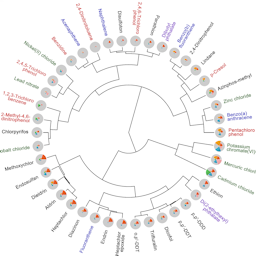Rapid hazard characterization of environmental chemicals using a compendium of human cell lines from different organs
Main Article Content
Abstract
The lack of adequate toxicity data for the vast majority of chemicals in the environment has spurred the development of new approach methodologies (NAMs). This study aimed to develop a practical high-throughput in vitro model for rapidly evaluating potential hazards of chemicals using a small number of human cells. Forty-two compounds were tested using human induced pluripotent stem cell (iPSC)-derived cells (hepatocytes, neurons, cardiomyocytes and endothelial cells), and a primary endothelial cell line. Both functional and cytotoxicity endpoints were evaluated using high-content imaging. Concentration-response was used to derive points-of-departure (POD). PODs were integrated with ToxPi and used as surrogate NAM-based PODs for risk characterization. We found chemical class-specific similarity among the chemicals tested; metal salts exhibited the highest overall bioactivity. We also observed cell type-specific patterns among classes of chemicals, indicating the ability of the proposed in vitro model to recognize effects on different cell types. Compared to available NAM datasets, such as ToxCast/Tox21 and chemical structure-based descriptors, we found that the data from the five-cell-type model was as good or even better in assigning compounds to chemical classes. Additionally, the PODs from this model performed well as a conservative surrogate for regulatory in vivo PODs and were less likely to underestimate in vivo potency and potential risk compared to other NAM-based PODs. In summary, we demonstrate the potential of this in vitro screening model to inform rapid risk-based decision-making through ranking, clustering, and assessment of both hazard and risks of diverse environmental chemicals.
Article Details

This work is licensed under a Creative Commons Attribution 4.0 International License.
Articles are distributed under the terms of the Creative Commons Attribution 4.0 International license (http://creativecommons.org/licenses/by/4.0/), which permits unrestricted use, distribution and reproduction in any medium, provided the original work is appropriately cited (CC-BY). Copyright on any article in ALTEX is retained by the author(s).


